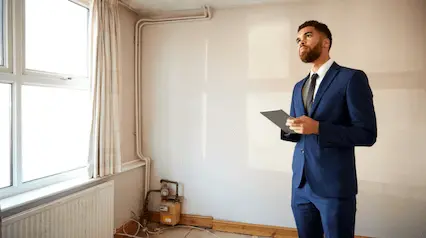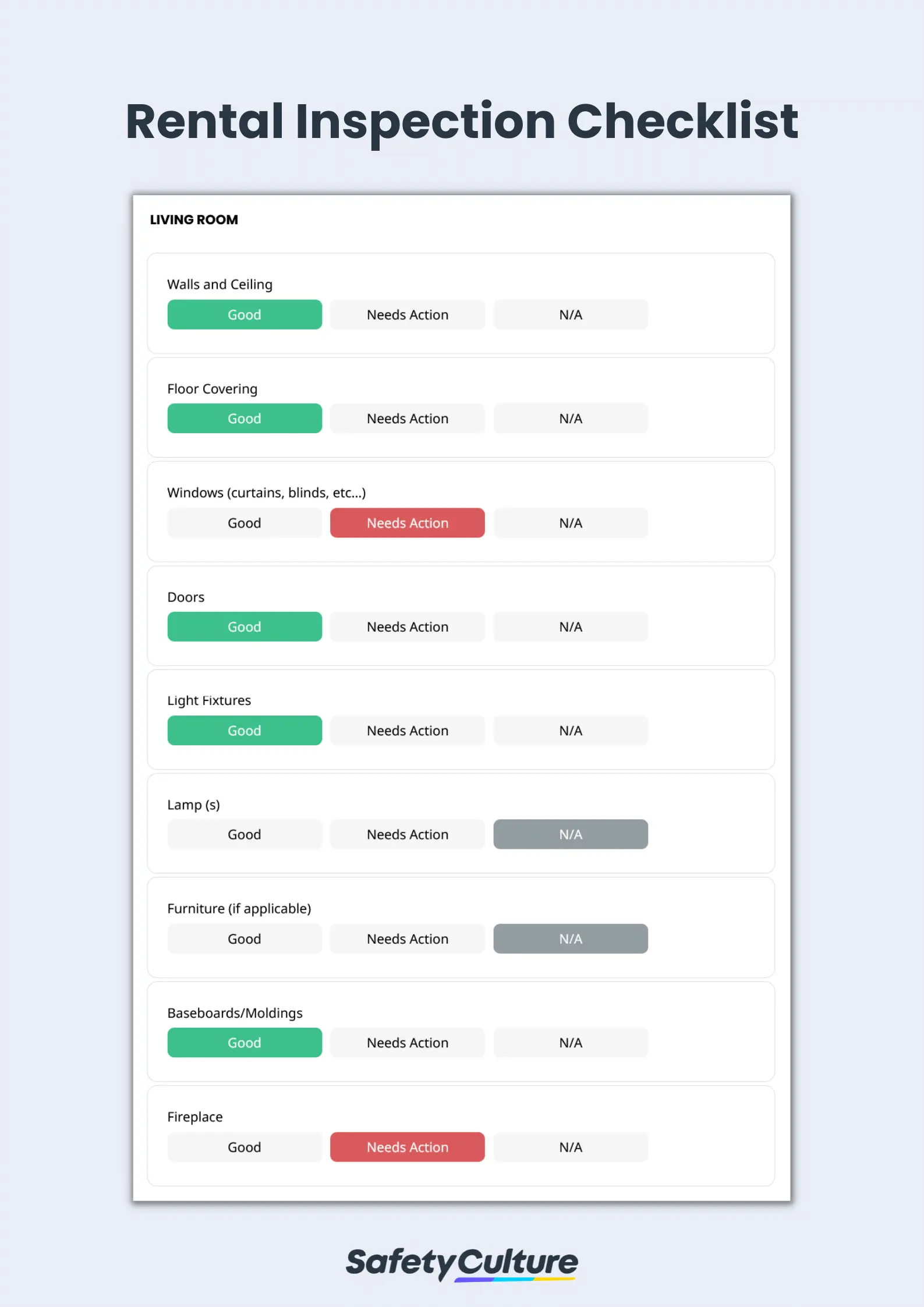What is a Rental Inspection Checklist?
A rental inspection checklist is a tool used by landlords or property managers to ensure that rental properties are in good condition before, during, and after the tenant’s occupation. Conducting a rental inspection involves a thorough visual check of the property’s rooms and exterior.
What Should I Expect From a Rental Inspection?
The tenant should expect to be notified in advance according to applicable local regulations before a routine rental inspection is to be conducted by a property manager.
The property manager will visit and conduct a visual check of the area to ensure that the rental property is in good condition and maintained by the tenants according to the rental agreement. The spaces include the living room, kitchen, dining room, bathroom, bedroom, and other features of the property such as heating/cooling systems, parking areas, porch, etc.
Both the tenant and the property inspector can benefit from using a rental inspection checklist (that can be printed as PDF if needed) to ensure that every feature of the property stays in good condition.
What Should be Included in a Rental Inspection Checklist?
When performing a rental inspection, it is best to utilize a checklist as a guide to ensure thoroughness and accuracy. As mentioned above, here are some key items to include in a rental inspection checklist, along with the specific areas to inspect:
- General information – Add information about the property and unit type, name of landlord or manager, location of the property, and date of the inspection
- Living room – Check if walls and ceiling, floor covering, windows, doors, light fixtures, lamps, furniture, baseboards, and fireplace are in good condition.
- Kitchen – Assess the condition of cabinets, inside drawers, counters, stove and burners, oven, refrigerator, dishwasher, sinks, garbage disposal, and fire extinguisher/s.
- Dining room – Inspect the floor and floor coverings, walls and ceiling, light fixtures, windows and screens, and window coverings.
- Bathroom – Review the stare of the bathtub and shower, toilet, door locks and hardware, and inside drawers.
- Bedroom – Ensure that closets, smoke alarms, doors, and other components are in good working condition.
Also do a check of other features of the property such as the heating system, air conditioning, stairs, hallways, lawns, patios or decks, parking areas, and porches, to complete the comprehensive inspection.
How to Use the Rental Inspection Checklist
When conducting a rental inspection, it is critical to use a highly-configurable platform that allows for easy data-entry using portable devices such as mobile phones or tablets. It is also ideal to use readily available documents that include all the property areas that inspectors need to check so as to avoid missing anything during the process.
Steps to Using the Rental Inspection Checklist
An efficient rental inspection checklist follows these steps:
- List down all the items – Assess all the items listed under each property area. These areas commonly include the living room, kitchen, dining room, bathroom, bedroom, and others. If there’s a missing item that needed checking, modify them as needed to conform to the property to be inspected.
- Declare the status of each item – This is the part where inspectors can highlight whether the property is in a good shape or not. Emphasize the condition of each listed item by choosing between the options of Good, Needs Action, or N/A.
- Attach photo/video as evidence – Since rental inspections are particularly visual, it is essential to add photos or videos as tangible proof of good condition, issues, or repair needs so that they are all well-documented.
- Indicate an action – If an inspection item needs immediate countermeasure, create an action and describe what should be done to improve the condition of that specific property area.
- Complete the report – Finalize the inspection by completing the report with a digital signature from the landlord, property manager, or other inspectors.
3 Types of Property Inspection
Property managers and landlords use rental inspection checklist templates during rental inspections to ensure that key areas of the property are checked and in good condition. Here are the three most common types of rental inspections a property manager will perform and the key areas of focus during the inspection:
1. Rental Property Inspection
A rental property inspection checks the overall condition of a rental property to determine whether it’s livable or not. Thoroughly check every aspect of the property and take note of potential damages such as scratches/ marks on walls or floors, holes in the ceiling or walls, damaged window sills, door frames, etc. Conducting rental inspections on a quarterly basis is an effective way to show the commitment of property managers and landlords to maintaining the good condition of rental spaces.
2. Tenant Move-in Inspection
A tenant move-in inspection is conducted with the presence of the tenant. Performing this inspection documents any damage present before occupancy and can be used as reference to compare during the end of tenant’s occupancy. The items in this checklist cover the same as a regular rental inspection checklist but will be signed by both landlord and tenant.
3. Move out Inspection
A move out inspection is done after the tenancy period is over to review the property’s condition. Information collected using a rental inspection form can be included in the formal agreement between the landlord and tenant that assures accountability for damages found (if any) that were not present during the move-in.
FAQs about Rental Inspection Checklists
The purpose of preparing an inspection checklist before inspecting a rental unit is to ensure a systematic and thorough evaluation of the property’s condition. By creating a checklist in advance, you have a detailed list of items and areas to inspect, allowing you to methodically go through each point and document any issues or concerns you may find.
Rental inspection checklists are typically used by landlords, property managers, or their representatives who are responsible for conducting inspections of rental units. Although primarily used by owners, rental inspection checklists are also a valuable record for tenants since they provide proper documentation on the state of the property before, during, and after the tenant’s occupancy.
In general, conducting at least one move-in inspection and one move-out inspection is recommended to document the condition of the rental unit at the beginning and end of the tenancy. Additionally, periodic inspections every 6-12 months or as specified by local regulations can help ensure the property is well-maintained and address any issues proactively.



